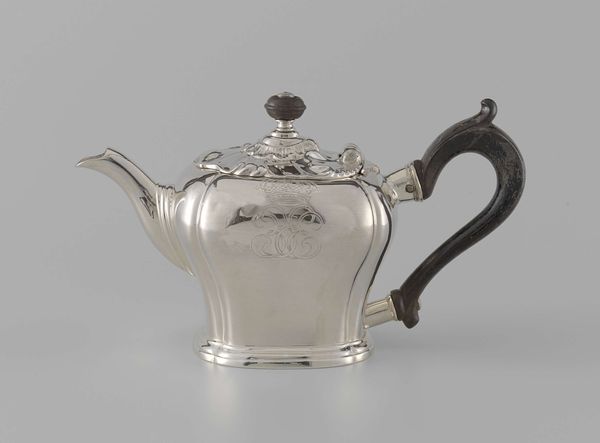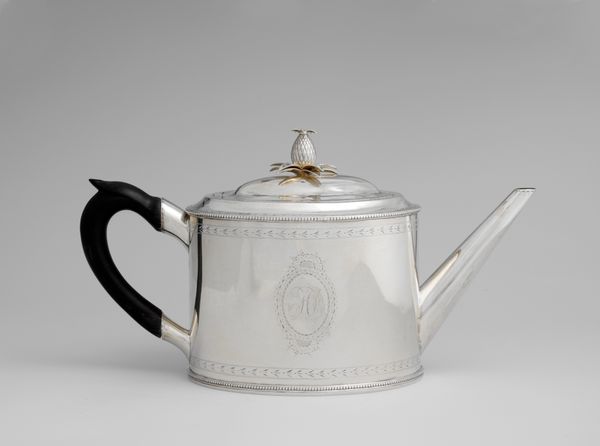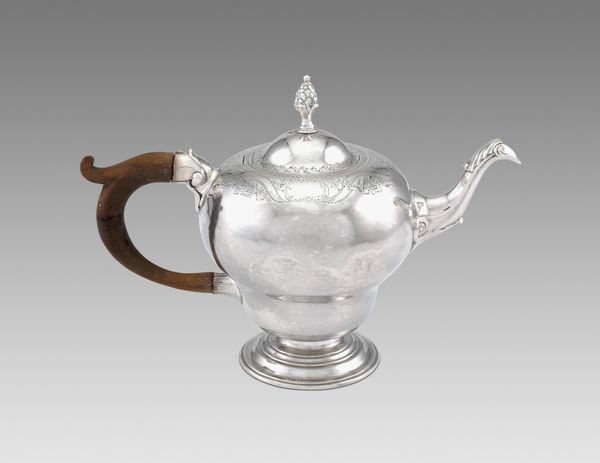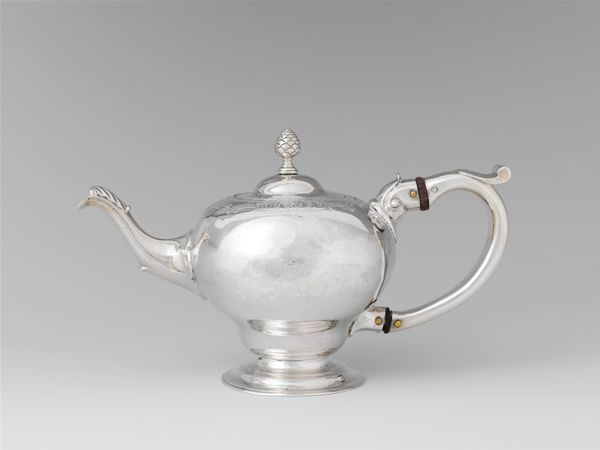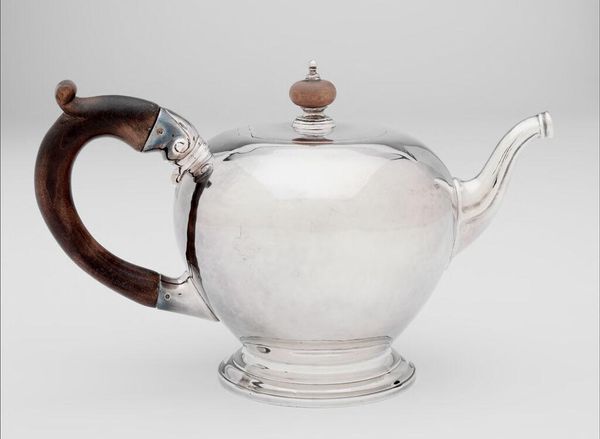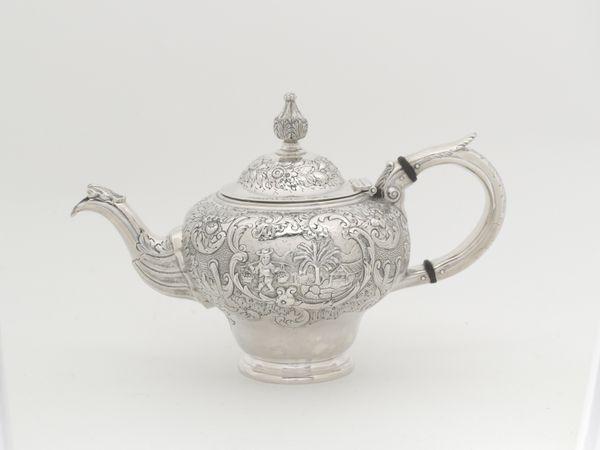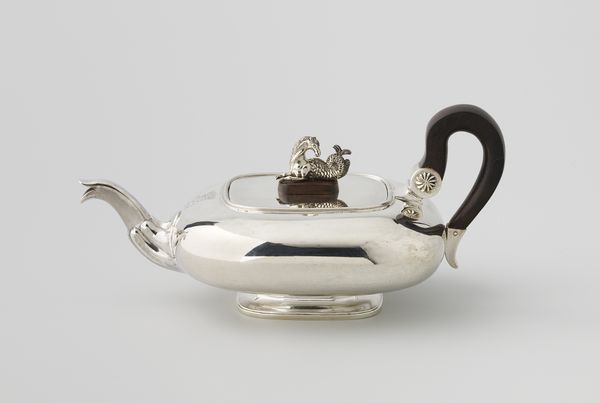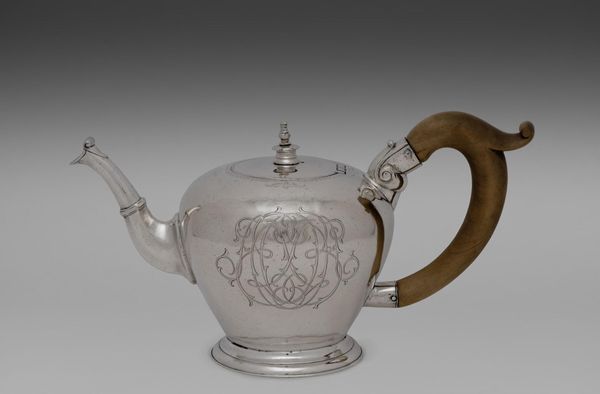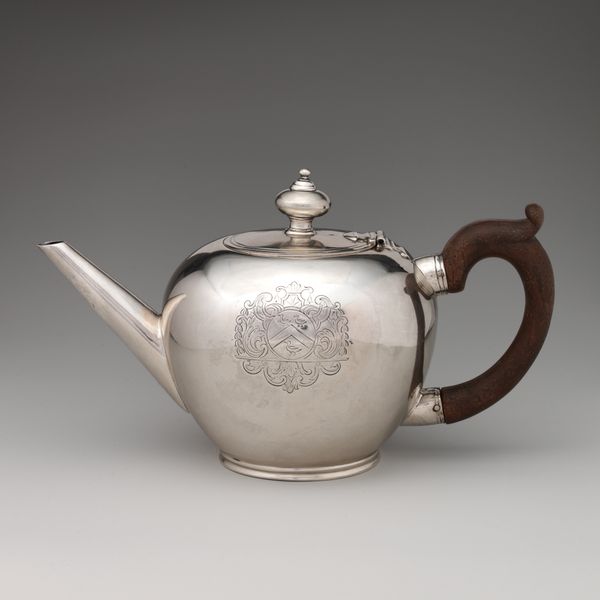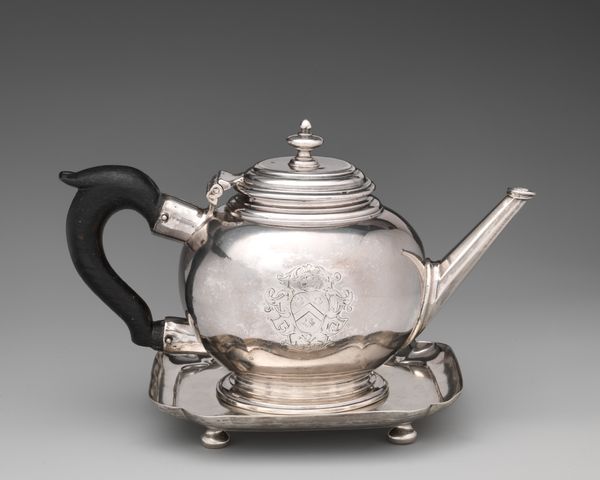
Dimensions: 6 x 10 in. (15.2 x 25.4 cm)
Copyright: Public Domain
This teapot was crafted by Elias Pelletreau, an 18th-century American silversmith, and is now housed at the Minneapolis Institute of Art. The eye is immediately drawn to its gleaming silver body, a testament to the artisan's mastery of the material, juxtaposed with the dark, robust wooden handle. The teapot's structure is a study in contrasts. The smooth, reflective curves of the silver vessel, suggesting luxury and refinement, meet the rugged, organic texture of the wooden handle. This interplay challenges a singular interpretation, inviting a dialogue between natural and artificial, function and decoration. The handle's dark color and solid form act as an anchor, grounding the teapot's otherwise ethereal quality. Consider how Pelletreau uses these contrasting elements. He presents us with an object that is both utilitarian and ornamental, prompting us to consider its multiple roles in society. It reminds us that even the most functional objects can be imbued with layers of meaning, reflecting the values and aesthetics of their time.
Comments
minneapolisinstituteofart about 2 years ago
⋮
These two objects are high-quality eighteenth-century examples of tea wares. The teapot by Pelletreau who apprenticed with Simeon Soumain (whose porringer is shown here) has an inverted pear shape, which would have been hand-hammered upside down to form its signature shape. The similarly-shaped body of the Richardson creamer, with its integral spout, was likely also raised from one piece of silver. The single cast foot distinguishes this Philadelphia creamer from tri-footed New England examples.
Join the conversation
Join millions of artists and users on Artera today and experience the ultimate creative platform.
